The Samsung Galaxy S6 and S6 edge Review
by Joshua Ho on April 17, 2015 9:00 AM EST- Posted in
- Smartphones
- Samsung
- Mobile
- Galaxy S6
- Galaxy S6 Edge
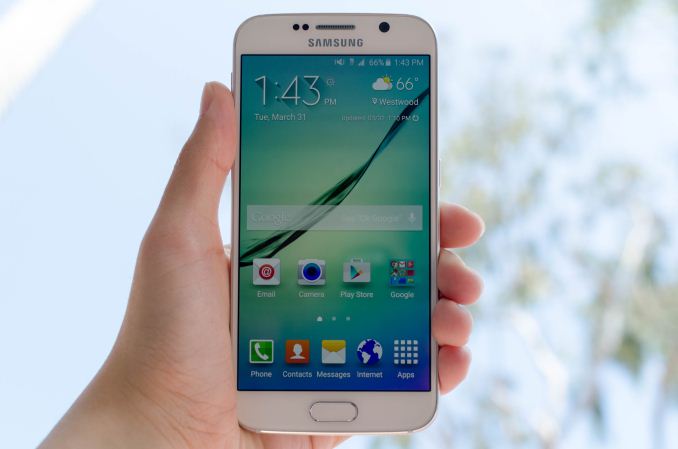
As recently as the Galaxy S5, Samsung had a fundamentally different strategy from companies like HTC and Apple. While design wasn’t ignored completely, Samsung Mobile had a different set of priorities. In general, it felt like Samsung wanted the phone to have every feature possible to please every possible potential customer. Features like a removable battery and microSD card slot seemed to be a crucial point of differentiation. TouchWiz focused on delivering a full suite of applications even if they were pretty much redundant when compared to Google’s applications. Samsung also seemed to cost-optimize their external shells, favoring polymer builds over glass or aluminum. Since the Galaxy S, this strategy paid off handsomely. With the help of strong marketing, Samsung proceeded to dominate the Android market from the days of the Galaxy S2, to the point that almost no other Android OEM was relevant in terms of market share.
However, Samsung’s tried and true strategy failed with the Galaxy S5. Fundamentally, Samsung had always been competing with Apple and their iPhone line-up at the high end, but Samsung consistently held a price advantage. The real problem was the rise of low-cost flagship phones, which squeezed Samsung significantly. Other OEMs were able to justify their high-end pricing by delivering a polished software experience and premium hardware design. In comparison to these relatively cheap phones which delivered largely the same experience and hardware, Samsung’s sales crumbled and the Galaxy S5 didn’t meet sales expectations.
This brings us to the Galaxy S6, which is supposed to be Samsung’s attempt at refocusing their product design and lineup. Design has become a major priority, and the Galaxy S6 is a radical departure from previous design in terms of almost every design choice. The Galaxy S6 represents the best that Samsung can make to some extent, as a great deal of the phone is composed of Samsung-made parts to achieve maximum vertical integration as seen in the specs below.
| Samsung Galaxy S5 | Samsung Galaxy S6 | Samsung Galaxy S6 Edge | |
| SoC | MSM8974ACv3 2.45 GHz Snapdragon 801 | Exynos 7420 2.1/1.5GHz A57/A53 | Exynos 7420 2.1/1.5GHz A57/A53 |
| RAM | 2GB LPDDR3 | 3GB LPDDR4-1552 | 3GB LPDDR4-1552 |
| NAND | 16/32GB NAND + microSD | 32/64/128GB NAND | 32/64/128GB NAND |
| Display | 5.1” 1080p SAMOLED HD |
5.1” 1440p SAMOLED |
5.1” 1440p SAMOLED, Dual Edge |
| Network | 2G / 3G / 4G LTE (Qualcomm MDM9x25 UE Category 4 LTE) | 2G / 3G / 4G LTE (Category 6 LTE) | 2G / 3G / 4G LTE (Category 6 LTE) |
| Dimensions | 142 x 72.5 x 8.1 mm, 145 grams | 143.4 x 70.5 x 6.8mm max, 138 grams | 142.1 x 70.1 x 7.0mm max, 132 grams |
| Camera | 16MP (5132 x 2988) Rear Facing with 1.12 µm pixels, 1/2.6" CMOS size, 31 mm (35mm effective), f/2.2 | 16MP (5132 x 2988) Rear Facing w/ OIS, f/1.9, object tracking AF | 16MP (5132 x 2988) Rear Facing w/ OIS, f/1.9, object tracking AF |
| 2MP Front Facing | 5MP Front Facing, f/1.9 | 5MP Front Facing, f/1.9 | |
| Battery | 2800 mAh (10.78 Whr) | 2550 mAh (9.81 Whr) | 2600 mAh (10.01 Whr) |
| OS | Android 4.4 w/TouchWiz |
Android 5 (64-bit) w/TouchWiz | Android 5 (64-bit) w/TouchWiz |
| Connectivity | 802.11a/b/g/n/ac 2x2 + BT 4.0 (BCM4354), USB3.0, GPS/GNSS, MHL, DLNA, NFC |
2x2 802.11a/b/g/n/ac + BT 4.1 (BCM4358), USB2.0, GPS/GNSS, NFC |
2x2 802.11a/b/g/n/ac + BT 4.1 (BCM4358), USB2.0, GPS/GNSS, NFC |
| Wireless Charging | N/A | WPC 1.1 (4.6W) & PMA 1.0 (4.2W) |
WPC 1.1 (4.6W) & PMA 1.0 (4.2W) |
| Fingerprint Sensor | Swipe | Touch | Touch |
| SIM Size | MicroSIM | NanoSIM |
NanoSIM |
Design
There’s a lot of ground to cover in the Galaxy S6 and S6 edge, but probably the most immediate change is to the design. The Galaxy S6 is a unibody design, with no apparent screws. This does mean that there’s no removable battery or microSD slot, which shouldn’t be a problem for most people although this may be enough for some to write off this phone completely.
The back cover is now glass instead of plastic, and is attached to the phone with glue instead of plastic latches. Regardless of color or model, Samsung has placed an extremely fine pattern beneath the glass that manages to be subtle but also surprisingly brilliant under direct light. It’s tasteful in a way that the Galaxy S5 and Note 4 weren’t. The back of the phone also has a single LED flash, a heart rate monitor, and the camera which bulges out significantly. I personally don’t have a problem with camera humps, but the Galaxy S6’s camera hump is probably the biggest I’ve seen in recent memory.
The glass back cover meets the metal frame of the phone, which provides most of the structural rigidity and strength. On the normal Galaxy S6, this frame has a very slight curve and is almost cylindrical along the top and bottom of the phone, but flattens out along the sides for better grip. The bottom of this frame has the speaker, microUSB port, and 3.5mm headphone jack, which does make for some resemblance with Apple products launched within the last year. At any rate, the placement of the speaker, USB port, and 3.5mm jack are all appropriate for a phone.
The left side of the frame contains the volume buttons, which are clicky and solid, although pressing the buttons off-center does produce a noticeable flex. The right side of the frame has the power button and the nanoSIM slot on the normal version.
On the edge variant, the sides of the frame are dramatically thinner and appear to be angled out when compared to the Galaxy S6. In the hand, this makes it feel much thinner than the S6, but it really feels almost too thin to hold comfortably. Combined with the flat back, it’s really a bit of a struggle to pick up the edge off of a table, which compromises usability when compared to the normal S6.
The top of the frame contains the IR LED for TV capabilities and a hole for a microphone. On the edge variant, the nanoSIM slot is relocated to the top of the phone.
The front of the phone is probably the only aspect of the design that feels relatively similar to the Galaxy S5. However, the texture of the bezel beneath the glass is similar to the subtle finish of the back cover, which makes for a unique visual effect that manages to be tasteful and quite unique. Other than this, we see the same layout as most Galaxy phones, with two capacitive buttons (multitasking on the left, back button on the right) and a physical home button. In the case of the Galaxy S6, this home button has been turned into a fingerprint scanner that is touch-based rather than a swipe sensor. Along the top of the front face, we also see the ambient light sensor, a proximity sensor, the earpiece, and the 5MP front-facing camera. Directly below these items is the display driver beneath the bezel, which is similar to the “logo bar” of the One M7, M8, and every other phone on the market today. On the S6 edge, the sides of the display are curved to reduce the width of the phone, which does make it easier to hold in the hand, but there’s really no bezel reduction here as the side bezels seem to be larger than what we see on the S6.
Overall, the design of the Galaxy S6 and S6 edge is really unlike anything else they’ve produced in recent memory. The phone itself is well-sized and feels much more ergonomic than the Galaxy S5 due to the thinner build and mildly reduced bezel size. It really feels like Samsung cared about the design of the phone this generation, and the attention to detail here immediately puts Samsung near the top in this area. The front of the phone still feels a bit derivative, but I suspect that there isn’t much Samsung can do to change this when faced with design constraints like a physical home button. The S6 edge does look better in some ways, but ergonomically the sharper and thinner edge is a compromise compared to the normal S6. Either phone is still easily one of the best-designed phones I’ve seen this year.


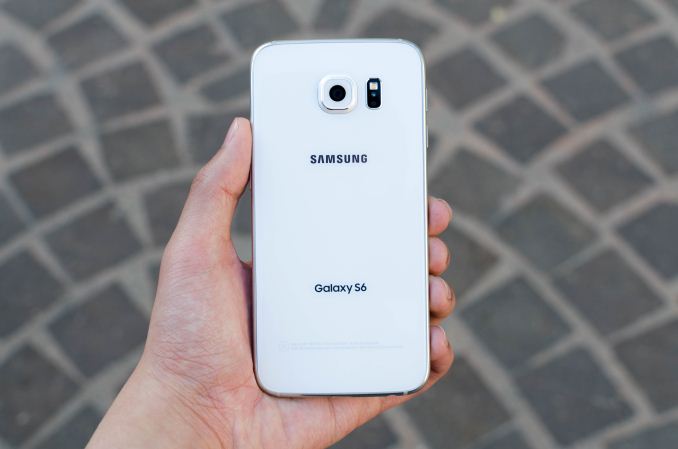
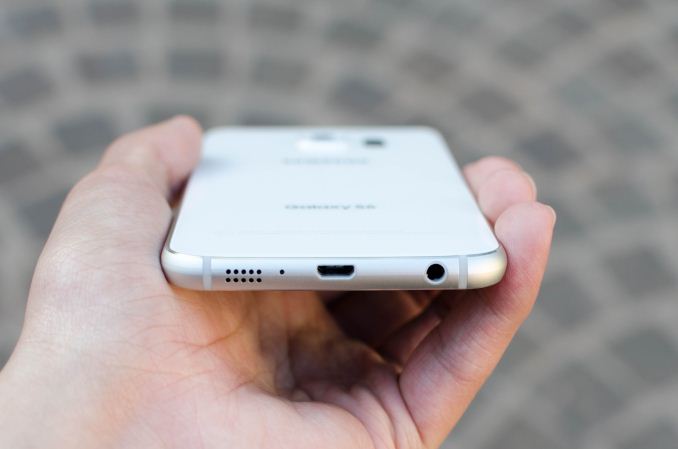
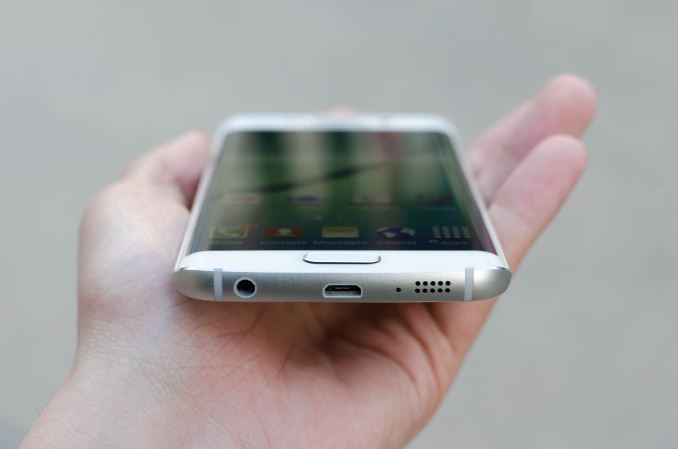



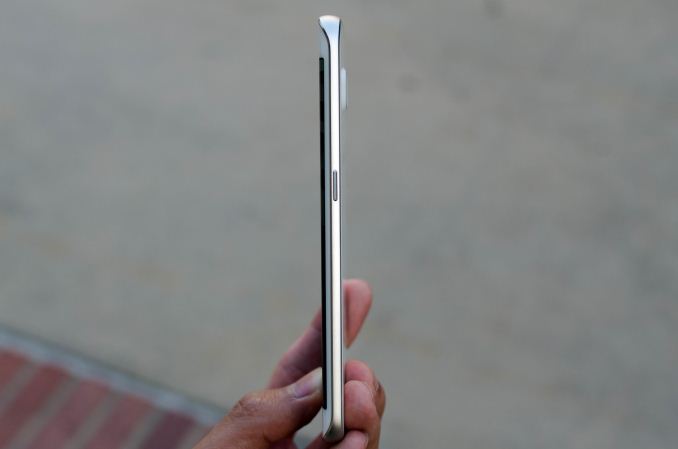

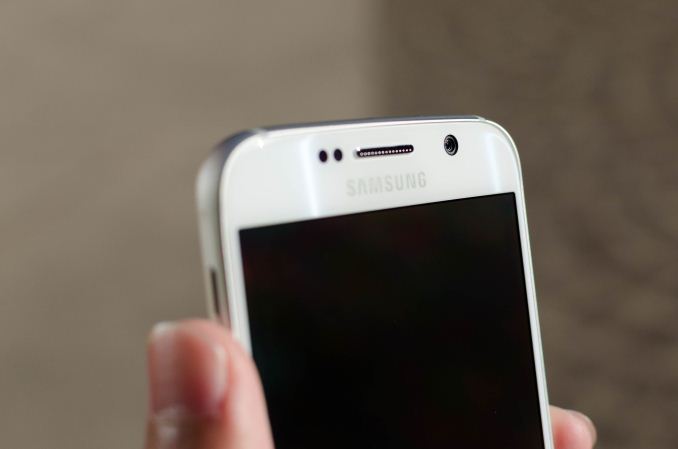
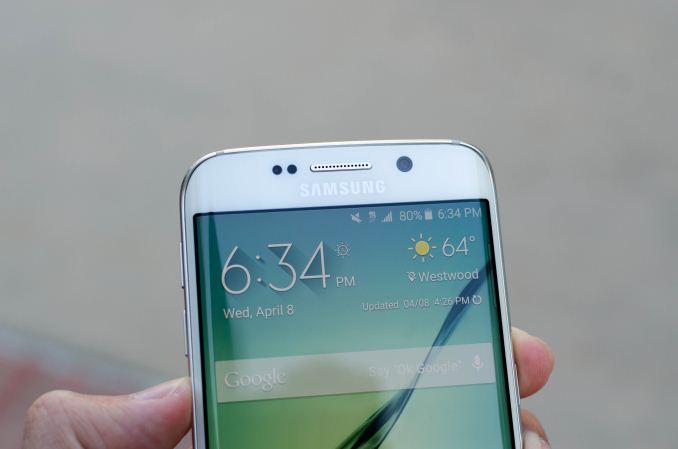








306 Comments
View All Comments
chizow - Saturday, April 18, 2015 - link
Yep exactly, I spend enough time tweaking my PC and at least it provides me proper tools to do so. After a few months with the S4 I just realized it wasn't worth it as the awful battery life and bloats OS made me want to just keep it in my pocket for fear of running out of juice when I actually needed it for phone functions.akdj - Sunday, April 26, 2015 - link
I'm ambidextrous. Use the 6+(personally) & Note 4 (family business of two decades). To be fair with your assessment the iPhone 5 sucked battery just as quick as the S4. At the time, comparable flagships for six months. 5S remedied it with iOS 7, but nothing like iOS 8 and the 6+'s battery size. It's physics and I'm with ya, not arguing. Just my two cents as my Note 4 with 5.0.1 is nearly identical to my 6+ with iOS 8.3 at the end of a 14-16 hour work and family day with similar usage shows similar reserves. Easily 50%. Usually high sixtiesThe memory leaks of yesterday and more granular control of apps and their background abilities on Amdroid (and the new core framework of 5.0), it's distribution of RAM (compression) and raw speed of the NAND makes the new generations of Android feel like iOS. Seriously. It's rare I run into less than 60fps manipulating the UI. And I use third party launcher Nova or Google. Samsung's stock browser is now not only capable but 'fast' and the displays have come a really REALLY LONG way since your S4. They're cool. Stop in and play with the hiDPI models like the S6 and Note 4. The latter of which hauls ass. And looking at these results, the S6 smokes it!
Across the board! And like us iOS dorks, Android's finally got a 128GB on board storage option. I'm as die hard SD card user as there is. I've got a Samsung Pro micro SD that just came out, & it screams! Awesome to pack with media and the like. But then again, I had two choices. White or black. 32 or 32GB. Even the fastest 64GB CF cards are over $200 to get to ½ the speed the S6's internals are reading and writing. And removable storage is prone to failure by user fault than non accessible OEM supplied 'system' optimized storage.
This latest batch of iOS and Android flagships have seen a significant increase in the internal read/write performance. Anyone that used or is using HDDs and have switched to an SSD knows the difference in perceived speed. It's the same on a phone when they've increased as much as they managed to in the past two years.
Especially this round. Note 4. The iPhone 6/6+. And now the king, look at those speeds on the S6. Those are insane and with the faster SoC, RAM (DDR4) and 'storage' I just talked about, along with the lollipop update and it's corresponding (massive) energy savings I've seen makes these 'phones' over the past ten months faster than computers we were using just five years ago. With higher resolution displays. Faster internet than even possible in most places then, wired! & we're getting those speeds on LTE! Wireless cell speed, increased horsepower, refined OS and leaps and bounds of improvements to AMOLED technology have made for a really tough decision which platform to go with. I'm still partial to iOS but only because of its integration and aggregation with OS X, my OS of choice. While I also use Win 8.1 and enjoy it ...neither system welcomes my browser of choice for nearly a decade. Chrome. Now 'Google Apps' it 'takes over' your computer. OS X or Windows, slow as molasses and it's a resource hog! Never thought I'd see the day IE and Safari would be my first choice(s).
Sorry to ramble. Just a view from someone not as responsible as yourself (I've no self control and can't decide between which, so both) and having continued ownership of both platforms since you switched, I'm floored by the improvements to Android, and their associated flagships. The displays are unbelievable when watching movies. Just awesome. Hard to explain how immersive a flick is on a 1440p 5.7" display with a killer set of cans ;)
Onsager - Friday, April 17, 2015 - link
Well written article, however given the few negatives, and very notable benchmarks, I am surprised it didn't receive a 'recommended' badge. The Exynos 7420 Soc itself deserves an award. In fact, numerous statements in the article certainly distinguish this phone as the current class of the field. 'What's a phone gotta do...'halcyonmax - Friday, April 17, 2015 - link
couldn't agree more.gnx - Friday, April 17, 2015 - link
+1Peichen - Saturday, April 18, 2015 - link
Is it necessary? The conclusion already states this is the best Android phone out right now.Onsager - Saturday, April 18, 2015 - link
By that rationale, no awards are ever necessary.akdj - Sunday, April 26, 2015 - link
That's kinda what I concluded. Awards? Who GAS? Hey quite honestly says this is hands down the Android 'king of the hill' (my quote) several times. Camera. Check. Display check. SoC - Yep, Whole page devoted to it eating the rest of the field for lunch. The only silicon that competes with it right now is the A8, Apple's second generation 64bit bad ass.Kinda cool Sammy did what they did with Exynos when the SD810 heat/throttling came to light. Good for them but I think I must've read a different article than you. This isn't a site for trophies and ribbons. And you don't have to read between lines
He actually says this is the BEST Android on the market and perhaps best overall phone. There's areas iOS best Android and vice versa. It's tough to say ones better than the other with 'numbers' ratings or some sort of star system. Bette to say it with words as the author (Josh? I'm sorry bud. Too lazy to look;)) has dome. It's right above this section.
It's called
"Final Words"
Babios - Friday, April 17, 2015 - link
I just had a hands on with both phones for more that an hour. Nice performance but too expensive for android phones. I am disappointed from a 1000€ phone (no sd, single sim, single speaker) and I can not feel it as a premium for that price range.You can buy a cheaper android phone that can cover your needs 99% with the 1/3 of the “Edge” price. S6 can score 70000 in Antutu but mine with 40000 is super fast in every game - application I have used.
Apple became cheaper that Samsung thats the news !!!!
magreen - Friday, April 17, 2015 - link
"As a reminder, power scales quadratically with voltage, so a drop from 1287.50mV to 1056.25mV as seen in the worst bin 1.9GHz A57 frequency should for example result in a massive 48% drop in dynamic power."It's a 33% drop in dynamic power, isnt' it?
(1287.5^2 - 1056.25^2) / 1287.5^2 = 0.327.
(The 48% number would be how much more power the higher voltage part uses than the lower voltage part, which is not the power drop.)